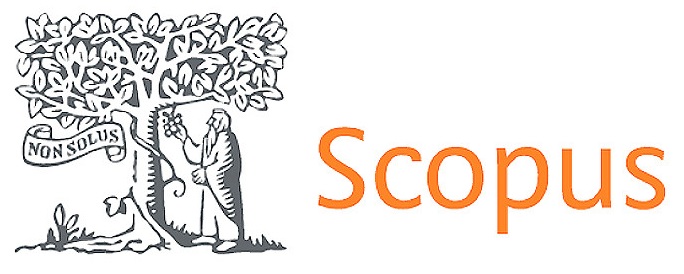The Heberprot-P in the 21st century
DOI:
https://doi.org/10.56294/hl2024.554Keywords:
Heberprot-P, complex wounds, diabetic foot ulcers, healing, closure by secondary intentionAbstract
Introduction: Heberprot-P, considered the medicine of the 21st century for the healing of diabetic feet, is emerging as a promising technique for the repair of destroyed or damaged tissues. Objective: To present the results of the use of intra- and perilesional Heberprot-P in complex ulcers in the province of Pinar del Rio, Cuba from 2022 to 2024. Methods: a descriptive, retrospective, cross-sectional study of the use of Heberprot-P 75 mcg was developed. intra and perilesional in patients with complex ulcers from January 2022 to March 2024 in the province Pinar del Río, Cuba, with a total of 8482 lesions and an intentional sample of 181 complex ulcers. Inclusion criteria: presence of complex ulcers in the lower limbs. Exclusion criteria: those who did not meet the inclusion criteria with prior signing of the informed consent. Results: non-complex ulcers were more frequent, for 98%, diabetic foot represented 81% of complex ulcers, these with a higher rate of major amputation, hospitalization and intralesional infiltrations, with 18 doses (6 weeks, 42 days ) to achieve total granulation, correspondingly the time for closure by secondary intention was longer, 6 weeks after its application (84 days in total). Conclusions: the use of intra- and perilesional Heberprot-P is an effective therapy to accelerate granulation and closure by secondary intention of complex wounds that are difficult to heal.
References
1. Chicharro Alcántara D. Una doble terapia regenerativa acelera la cicatrización cutánea. Diario Médico Redacción. [Internet]. 2017 [citado 03/01/2024]; 12(28). Disponible en: Disponible en: https://gneaupp.info/una-doble-terapia-regenerativa-acelera-la-cicatrizacion-cutanea/
2. Álvarez López A. Respuesta al tratamiento con Heberprot-P® según la severidad de la enfermedad arterial periférica. Rev Cubana Angiol Cir Vasc. [Internet]. 2016 [citado 15/08/2024]; 17(2):130-7. Disponible en: Disponible en: http://scielo.sld.cu/pdf/ang/v17n2 /ang03216.pdf
3. Martínez Gálvez I, Rodríguez Rodríguez Y. Úlcera del pie diabético tratado con Heberprot-p(r). Rev Cubana Angiol Cir Vasc. [Internet]. 2020 Abr [citado 02/01/2024]; 21(1):90. Disponible en: https://scielo.sld.cu/scielo.php?script=sciarttext&pid=S1682003720200001000 02 &lng =es&nrm=iso
4. Rios Caballero Y, Eliseo Musenden O, Peguero Bringuez Y, Santana Caballero R. Heberprot-P® en el tratamiento de trauma vascular distal. Rev Cubana Angiol Cir Vasc [Internet]. 2023 [citado 22/04/2024]; 24 (1): 399. Disponible en: http://scielo.sld.cu/scielo.php?script=sc i_arttext&pid=S1682-00372023000100003&lng=es&nrm=iso
5. Iglesias Carbonell S. Caracterización de pacientes con pie diabético en el Policlínico “Pedro Borrás Astorga, de Pinar del Río.Rev Cub Ang y Cirug Vasc. [Internet].2021 [citado 05/01/2024]; 22(2):306. Disponible en: http://scielo.sld.cu/scielo.php?script=sci_arttext& pid=S1682-00372021000200007&lng=es&nrm=iso
6. Hernández Díaz AR, Lisvany Acosta Díaz L, Hernández Rojas AL, Martha Marisel Moreira Martínez MM, Medardo Rodríguez López M. Extensión en la aplicación del Heberprot-P al pie diabético de la provincia Pinar del Río. Rev Ciencias Médicas. [Internet]. 2021 [citado12/01/2024]; 25(2): 5021. Disponible en: http//www.revcmpinar.sld.cu
7. Lineamientos técnicos para el abordaje integral, multidisciplinario e interinstitucional a las personas con pie diabético. Ministerio de Salud Gobierno del salvador [Internet]. 2021 [citado 12/01/2024].Disponible en: http://asp.salud.gob.sv/regulacion/default.asp
8. Hernández Díaz AR, Acosta Díaz L, Hernández Rojas AL, Moreira Martínez MM, Medardo Rodríguez López M. Comportamiento de las amputaciones no traumáticas de miembros inferiores durante 2019-2020. Rev Ciencias Médicas [Internet].2021 [citado 11/02/2024]; 25(3): 5048. Disponible en: https://revcmpinar.sld.cu/index.php/publicaciones/article/view /5048
9. Osorio Cuevas DI, Júbiz Pacheco Y.Cost-utility analysis of recombinant human epidermal growth factor versus negative pressure therapy in the treatment of complicated diabetic foot ulcers in the Colombian setting. Clinical practice. Wounds International [Internet]. 2021 [citado 08/01/2024]; 12(4). Disponible en: https://www.woundsinternational.com
10. Rahim F, Yan X, Ali Shah J, Bibi N, Zafar Ullah Khan Z, et all.Epidermal growth factor outperforms placebo in the treatment of diabetic foot ulcer: a meta-analysis. F1000Research [Internet]. 2023 [citado 24/02/2024]; 11:773. Disponible en: https://doi.org/10.12688 f1000research.121712.2
11. Fernández-Montequín JI, Infante-Cristiá E, Valenzuela-Silva C, Franco-Pérez N, Savigne-Gutierrez W, Artaza-Sanz H, et al. Intralesional injections of Citoprot P(r) (Recombinant human epidermal growth factor) in advanced diabetic foot ulcers with risk of amputation. Int Wound J [Internet]. 2007 [citado 09/02/2024]; 4:333-43. Disponible en: https://pubmed. ncbi.nlm.nih.gov/17953679/
12. Berlanga-Acosta J, Gavilondo-Cowley J, López-Saura P, González-López T, Castro-Santana MD, López-Mola E, et al. Epidermal growth factor in clinical practice-a review of its biological actions, clinical indications and safety implications. Int Wound J [Internet]. 2009 [citado 09/02/2024];6(5):331-46. Disponible en: https://pubmed.ncbi.nlm.nih.gov/19912390/
13. Fernandez Montequin JI. Heridas de difícil cicatrización.Rev Cub Ang Cir Vas [Internet].2011.Disponible en: https://www.medigraphic.com/pdfs/revcubangcirvas/cac-2012/cac121i.pdf
14. Cacua Sanchez MT, Vargas Abello LM, Álvaro Orrego A, Ortiz P, Segura H, Berrio Caicedo JJ, et all. Use of Intralesional and Perilesional Human Recombinant Epidermal Growth Factor (hrEGF) in the Local Treatment of Venous Ulcer – Review Article – Expert Recommendation. Vascular Health and Risk Management [Internet]. 2023 [citado 12/12/2023]; 19: 595–603. Disponible en: https://www.dovepress.com/on
Published
Issue
Section
License
Copyright (c) 2024 Aida Rosa Hernández Díaz, Ana Lidia Hernández Rojas, Ana Lidia Hernández Rojas, Marta Maricel Moreira Martínez, Gladys Rojas Reyes, Yosmany Delgado Estrada (Author)

This work is licensed under a Creative Commons Attribution 4.0 International License.
The article is distributed under the Creative Commons Attribution 4.0 License. Unless otherwise stated, associated published material is distributed under the same licence.






